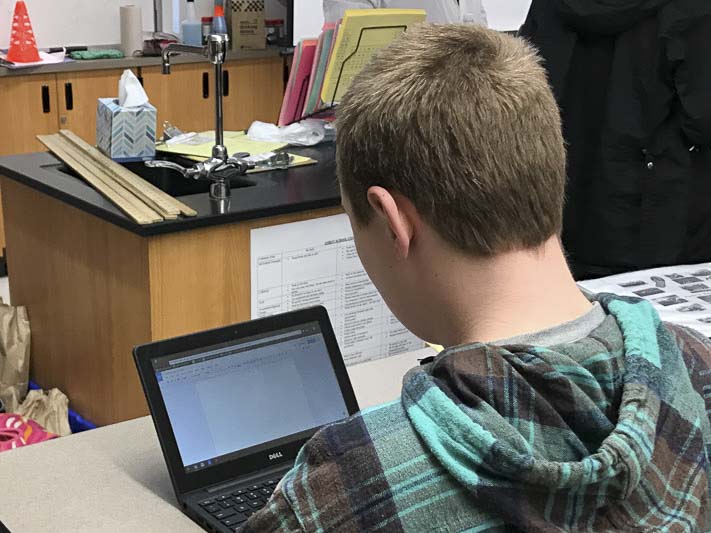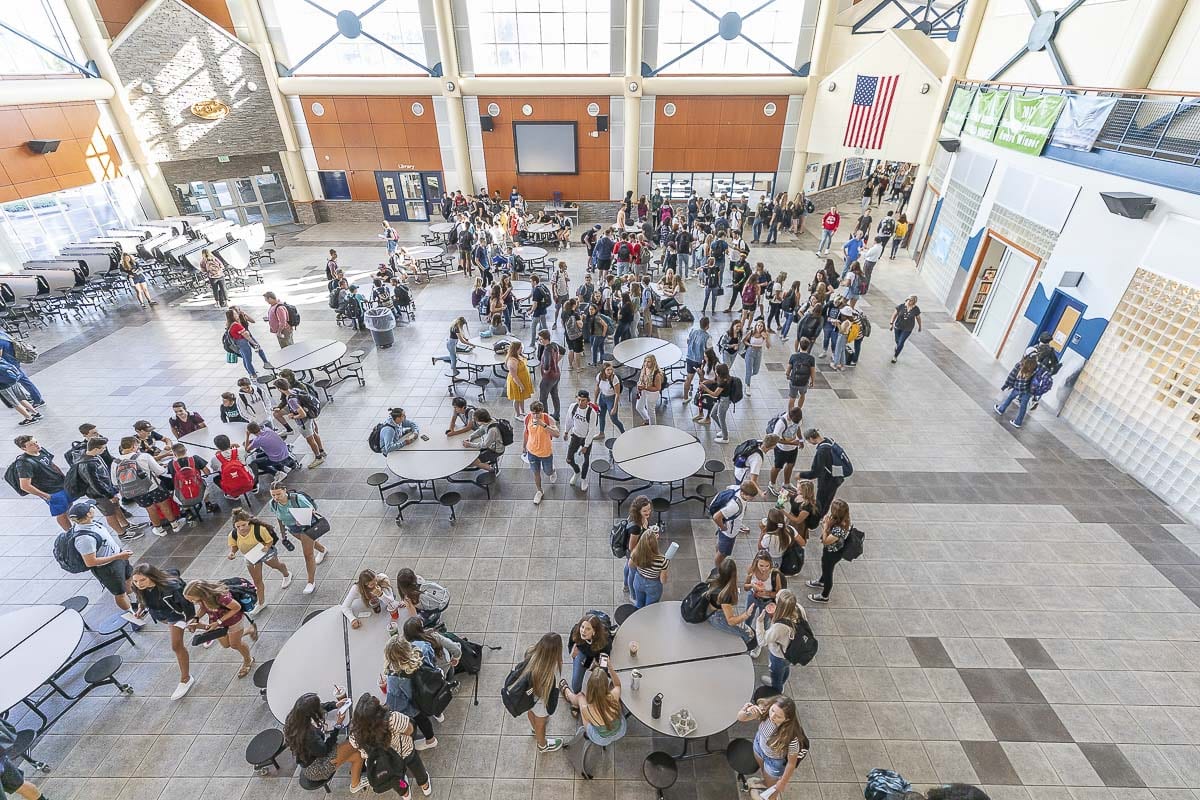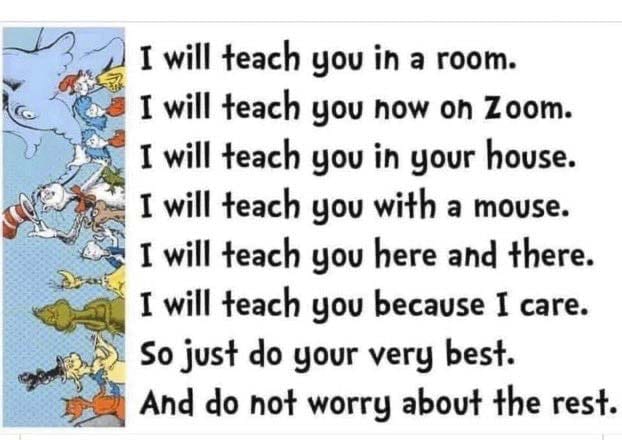Districts will work to implement online learning at least through June 19
CLARK COUNTY — Nearly three weeks since Washington schools were closed through April 24, parents learned today that children will not return to their classrooms for at least the remainder of this school year.

Gov. Jay Inslee, along with State Schools Superintendent Chris Reykdal announced Monday that districts across the state will move to a distance learning model for the remainder of the academic year, and use this time to prepare for the possibility that the start of the upcoming school year could also be delayed.
“We simply cannot take the risk of opening on-site education this calendar year,” Inslee said, noting that his previous extension of a stay home order through May 4, issued last week, had already made it increasingly unlikely that schools would reopen.
Washington becomes the 14th state in the U.S. to cancel the remainder of their academic school year.
As of Sunday, Washington had just under 8,000 confirmed cases of COVID-19, and 338 deaths blamed on the pandemic.
“This unprecedented emergency demands that we take this step,” the governor added.
Last week, Reykdal issued guidance to districts across the state aimed at helping them transition to distance learning methods.
The first step in that will be making sure as many students as possible have access to lessons. That includes handing out Chromebooks and iPads to families who need them.

In Vancouver Public Schools, that amounts to a $1.55 million investment for iPads, which will be paid back over four years. The district is hopeful that some federal or state emergency grant money might help to cover some or all of the cost.
Other districts, including Battle Ground and Ridgefield, are handing out Chromebooks to help students connect.
Those without Internet access can, in most cases, receive printed versions of lessons.
“I am particularly heartbroken for our seniors,” wrote Vancouver Schools Superintendent Steve Webb in a letter sent to parents. “I want to assure you that we will do everything possible to help you cross the finish line and graduate on time.”
Webb said that events such as graduation and senior prom would happen, even if it had to be later in the Summer or next fall.
“They may look different, but we will find creative ways to make them happen if necessary,” Webb said.
The governor’s order does allow for some on-site learning to happen, with social distancing rules in place. That could allow seniors to get instruction or finish up projects, or potentially provide a place for students who have no internet access at home to connect.
The state is also working with Internet providers and software companies in an attempt to connect students who may currently lack access to the internet.
“We will never replace face to face learning. It is the best model …” said Reykdal. “But right now, this is our moment to connect every family and see it as much as a right to be connected as clean water.”
What distance learning ultimately looks like will largely be up to each district, though the state has provided guidelines and recommendations.
“This will not be a transition from our traditional basic ed model simply to an online, in fact most districts will not go purely online,” said Reykdal in a video posted to YouTube last week. “That’s not the best education anyway for our kids, because it doesn’t have the beautiful connection that public schools traditionally provide.”
In the Ridgefield School District, teachers are being encouraged to use the distance learning time to keep students engaged, and even assist them with processing the situation.
“Engage in a quick mindfulness or self-calming exercise such as smelling a flower or completing four-corner breathing prior to completing the lesson,” says a guide from the district for teachers. “Support students in how to identify what others are feeling and to show their care and concern with acts of kindness. Have students reflect on how being at home because of COVID-19 is a kind and helpful act.”

It will be up to individual districts to determine how they want to handle graduation requirements. For most, distance learning will be encouraged, and yet optional.
The state’s guidelines recommend teachers spend approximately 45 minutes per day with kindergarten and first grade students, on up (in 15 minute increments) to no more than three hours daily for high school students.
“Learning at home is different from learning at school,” notes a Q&A from Ridgefield School District, “and we should not expect students to spend the same amount of time on their learning.”
Evergreen Schools Superintendent Mike Merlino said teachers there will be largely using Google Classroom and Seesaw to connect with students.
“Distance and remote instruction will not look the same as classroom instruction and, in all transparency, providing education via distance learning is new territory for us all,” Merlino wrote in an April 3 letter to parents. “We are committed to doing the very best that we can and to continuously improve our efforts as we continue to learn more throughout this closure.”
Reykdal noted that the rest of this school year will not be “the best” that Washington public education has to offer, “but our task is to rise to it. To engage our families and our students to continue learning, get our students moved to their next grade, get our seniors graduated to incredible opportunities, and to forever transform our system.”
Ultimately, both Inslee and Reykdal repeated that the state is committed to making sure students aren’t “punished” academically as a result of having the school year largely cut short.
“They’ve got work to do,” Reykdal said of students. “They’ve got to work hard to maintain their effort, to improve their grades where that opportunity is afforded to them. But no student, due to a global pandemic, should see their GPA erode and risk their higher education opportunities.”
The school year closure means students are expected to miss out on around 325 hours of education, which equates to nearly 2.5 percent of the entire educational opportunity afforded K-12.
Safety net will remain
Districts across the state will also continue to provide meals for students who require free or reduced lunches. Reykdal said over four million meals had been provided in just the 10 days following the closure of schools.
Every district in Clark County has said they will continue to provide free lunches, along with daycare opportunities for those on the frontlines of the pandemic.
Each district has also provided a list of information for parents looking for details.




